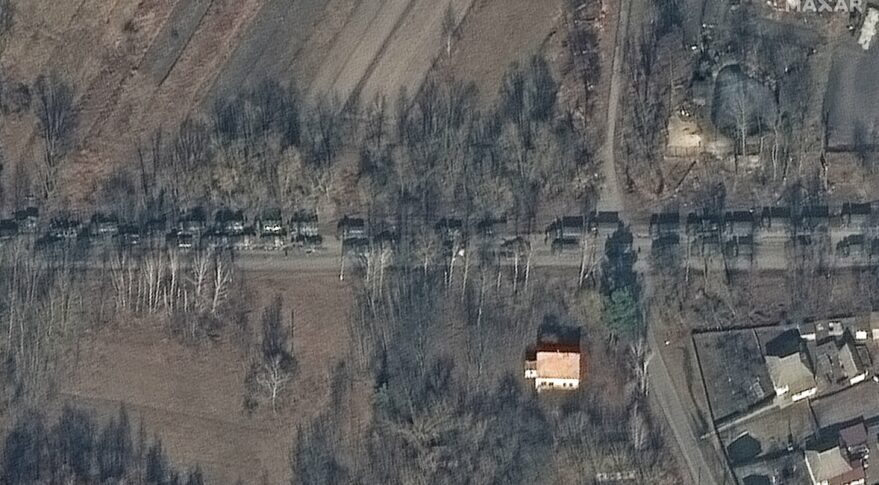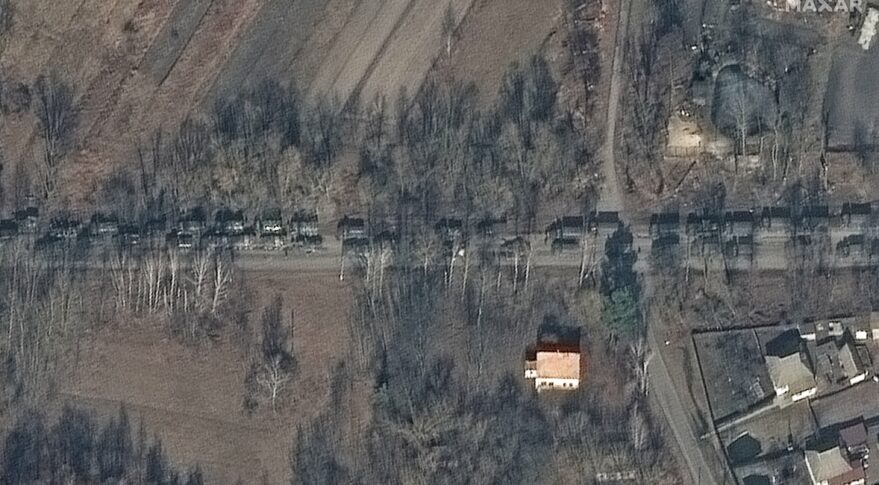
Satellite imaging companies look for growth in data analytics (Image Credit: Space News)

WASHINGTON — Satellites in space operated by private companies helped governments and news media tell the story of Russia’s invasion of Ukraine. With momentum from these operations, players in this industry are hoping to grow their business selling not just imagery but also analytics products that draw trends and insights from raw data.
The main customer for these services is the National Geospatial Intelligence Agency, which last year announced a $29 million procurement of data analytics services over five years, and intends to increase buys as companies come up with new products, said David Gauthier, director of NGA’s Commercial and Business Operations Group,
The agency traditionally has relied on its own analysts to draw insights from imagery. But NGA has a growing appetite for new types of analytics services offered by the private sector, Gauthier said Sept. 15 at the Intelligence & National Security Summit held at National Harbor, Maryland.
Of interest are monitoring services performed by small satellites that make repeated image captures at set intervals. The frequent, automated collections — and the analysis done with artificial intelligence and machine learning software — help track change and identify trends.
The industry can do this at a fast pace, Gauthier said. “It reduces the latency for us, it reduces the barriers to operational use and integration into our workflows.”
Gauthier said NGA is using commercial services, for example, to monitor global economic trends. “We’re buying automated detections that tell us things about infrastructure, roads, rails, building damage,” he said. “We’re buying automated detection to tell us about objects, cars, ships and aircraft.”
The data provides insights on activities that have national security and economic implications, such as illegal fishing, GPS interference or the flow of methane gas, he said.
Earth monitoring and satellite imaging company BlackSky has won some of NGA’s recent contracts for economic monitoring. The company received a total of $13.8 million of orders over the past year, BlackSky said Sept. 19.
“These awards underscore the growing demand for commercial real-time, AI-driven monitoring services that reveal economic activity at manufacturing hubs, major maritime ports and airports around the world,” BlackSky said in a statement.
Competitive advantage
Government and commercially owned spy satellites are proliferating and the United States increasingly will face tough competition in this area, said Frank Garcia, professional staff member of the House Permanent Select Committee on Intelligence.
This should put pressure on the U.S. intelligence community to tap the commercial market in order to gain a competitive advantage, Garcia said Sept. 15 at the INSS symposium. Lawmakers on Capitol Hill, he added, are concerned that the U.S. government is not doing enough to incentivize private investment in this sector of the industry.
The House and Senate intelligence committees asked the Government Accountability Office to dig into these questions. The GAO in a report earlier this month concluded that “actions are needed to better use commercial satellite imagery and analytics.”
One of the takeaways from GAO’s report, said Garcia, is that there’s a need for an acquisition organization to work with industry to “develop a next generation of capabilities that is going to benefit both commercial applications, government intelligence collection and combat support.”
Garcia said one of the challenges is the procurement bureaucracy, as the intelligence community has divided responsibilities for acquisition. The National Reconnaissance Office operates the nation’s spy satellites and is in charge of buying commercial imagery, while NGA is responsible for analytics products and services. “That’s a tension that in my mind isn’t fully resolved,” he said.
The NRO in May awarded 10-year contracts to Maxar Technologies, BlackSky and Planet Labs to supply imagery. This creates “some stability,” Garcia said. However, he said, “you don’t want to be locked in for so long and miss out on opportunities that may arise very quickly … and miss the ability to onboard new entrants as innovations keep coming.”
On Capitol Hill, he said, members “think it is really vital for us to continue investing. And yet when the budgets come in, we still see some level of under investment, which is kind of disappointing.”
He suggested the government should share with the industry a forward-looking spending plan for commercial imagery and analytics services, which would likely spur private investment, said Garcia. “We’re trying to encourage the administration to lay that out.”
While the NRO is a major buyer of electro-optical imagery, agencies have not yet leveraged the new types of commercial satellite data – such as synthetic aperture radar, radio-frequency mapping and hyperspectral imagery — where the commercial market isn’t fully baked, said Garcia.
HawkEye 360, a commercial provider of space-based radio frequency data and analytics, is one of the newer entrants that has seen growing demand for its services during the Ukraine war and is looking for longer term, steady contracts.
James Doggett, vice president of mission assurance at HawkEye 360, said the U.S. government has made it clear it wants to work with commercial suppliers but does not want to be the anchor customer, which puts pressure on companies to seek business elsewhere.
For newer companies that don’t have multi-year contracts, when government demand goes down, “it can be existential,” Doggett said.
Lifelines are sought in the export market, he said, but companies need help from the U.S. government to navigate the interagency process to get export licenses. “And I think that’s a key area where the government can act as a partner.”








